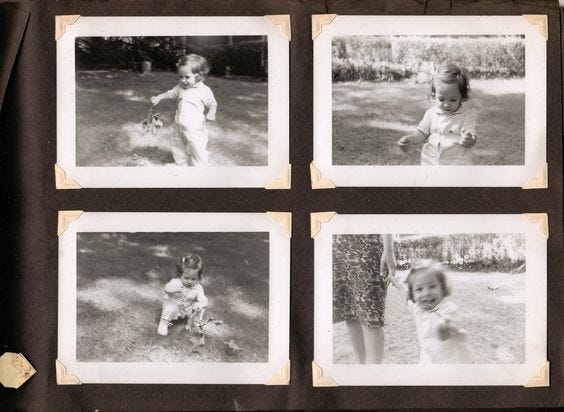How Do We Remember?
While recently back home at my childhood house, I saw an old picture of the kitchen area in the home that I lived in when I was 0-4 years old. This picture instantly triggered a dream-like memory of my brother and I playing in said kitchen, a memory I had long forgotten.
Which made me ask, why do I remember that moment now?
Like most things about us, our memory is a function of evolution. To survive, humans had to remember information about the natural world around them. Which river was infested with crocodiles? Which berries were dangerous to eat? Which tracks signaled prey vs. predator? Those that had poor memory died, those that remembered well survived. Thus, natural selection helped us improve our memory over the generations.
Indeed, humans have the tremendous ability to recall tons of information from memory. But we also have a tremendous ability to forget. Yet, do we truly forget things? As these anecdotes reveal, sometimes we store memories in external artifacts that act as secret keys. Mentally, we compress these memories into extremely small files that live dormant for years. But when we stumble upon these external artifacts, a picture, a smell, a song, etc., these stimuli act as a key that activates these dormant memories. Would it be possible to recall these moments without these triggers? I sure wouldn’t have been able to.
So do these memories live in us, or in the object? It’s a fascinating information theory question. Our mind has created this complex memory system that significantly lowers the storage load of information on our device (our minds), and by doing so has freed us up with more energy and space to compute (think). It’s created a system whereby we forget — in the sense we lose the ability to recall — yet can access these dormant, and perhaps even encrypted memories, through external keys. This means that contexts collapse into objects, and we rely upon our senses (sight, smell, touch, hearing, taste, etc.) to recognize these objects and their hidden keys and transmit this information to our brain so that our mind can unlock these dormant memories.
I stumbled upon that picture of my family’s old kitchen while doing some spring cleaning and flipping through a few photo albums. Each roughly weigh about 5 pounds and are the size of a Xbox 360. Each contain somewhere between 60-100 photos that capture my family’s life around my birth and that of my two brothers. These photos, I imagine, can trigger memory for dozens of people whom happen to be captured during that period of time in my family’s life, and I imagine these people would be unable to recall such memory without the trigger of these pictures.
Yet compare that to today. The same collection of photos live weightless and without size, instead are digitized in our phone albums and cloud storage. They can be shared instantly to others and then replicated and saved with no effort. Orders of magnitude more moments will and have been captured, saved and collected. Will this digital image create the same trigger of memory as the physical photo album does? One would imagine so, as we use the sight to observe both images.
Thus, with so much more information of our existence captured in these artifacts that can trigger memory, and with such an easier ability to access these artifacts, will we greatly expand our ability to revisit the past and remember moments, emotions and information that we store in these external triggers?
How will that change us?


